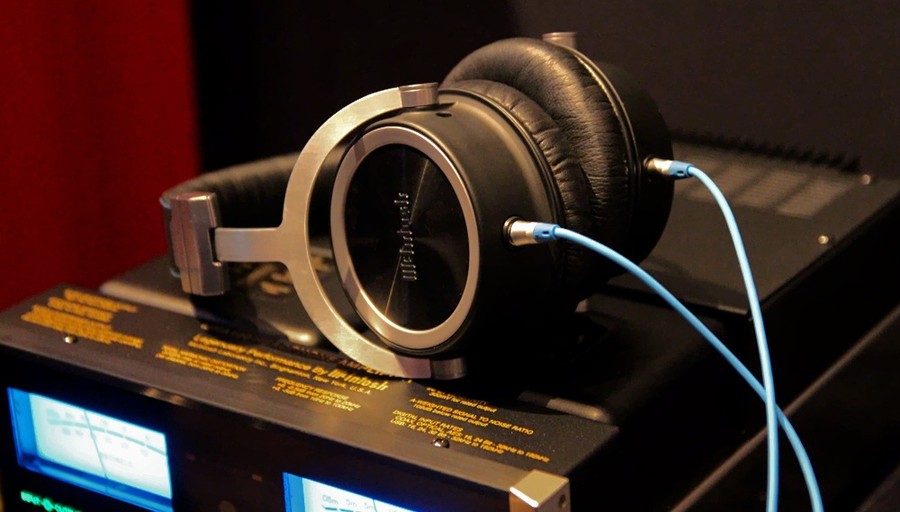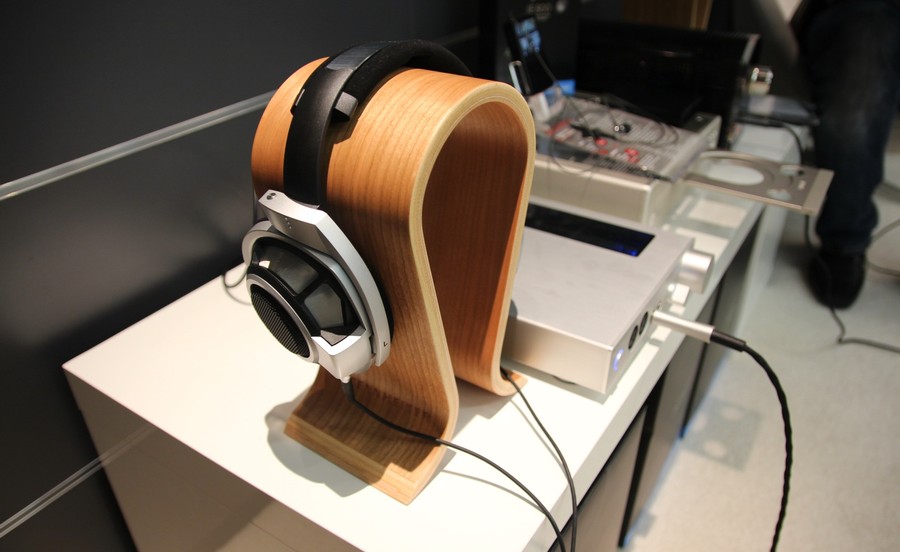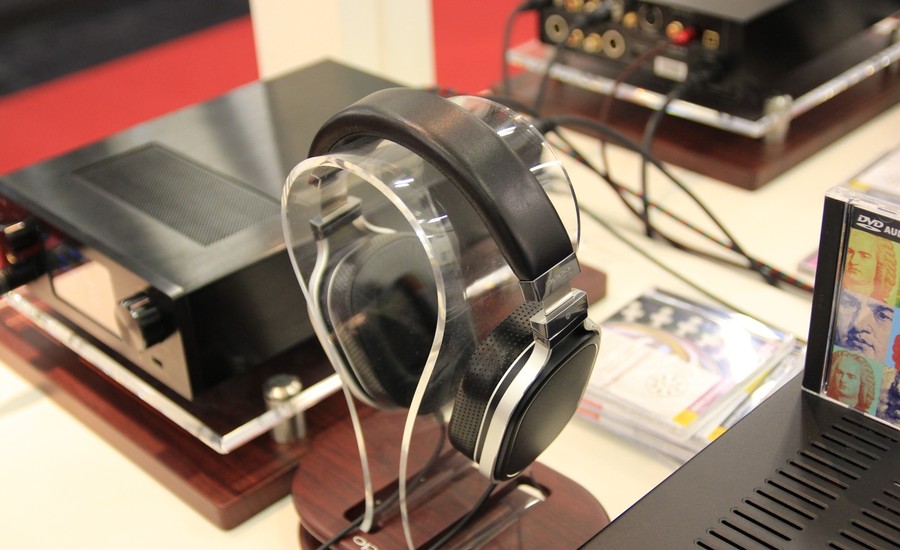3. Type I - Supra/Circumaural - www.hifilounge.eu
Main menu:
- Home
- General
-
Speakers
- Basics
- Speakers
- Headphones
- Subwoofer
- Elektronics
- Surround
- Photography
- Infos
3. Type I - Supra/Circumaural
Speakers > Headphones
Headphones can be roughly divided into three categories with regard to their design
- Supraaural - On the ear
- Circumaural - Ear-enveloping, over-ear.
- Intraaural - Earbuds and In-Ears (more on this on the next page)
Each of these categories has its own advantages and disadvantages.
Circumaural headphones completely enclose the ear. These headphones are usually considerably larger and are therefore rarely used for mobile applications. The advantage of circumaural headphones is that they can be used with large chassis that do not rest directly on the ear, they are often mounted in some cm distance. These large drivers can provide a very homogeneous sound field to the entire ear and integrate the characteristics of the ear (HRTF) into the sound in a very natural way - which also explains the popularity of electrostatic and magnetostatic drivers.
In addition, small moves of the headphones does not necessarily change the sound.
High-end headphones for stationary use in the home chair or recording studio are mostly circumaural, with big drivers and space between the drivers and your ear the HRTF will be stimuladed in a very natural way. Soundstage and natural coloring will improve without further engineering needed.

Figure 1: McIntosh closed over ear Earphones with dynamic drivers
Suprauaural headphones are designed to be on the ear. In many cases suprauural headphones are closed and have a high contact pressure. The advantage is a compact design and good external noise attenuation. Supraaural headphones are increasingly used for mobile use, but some models are also designed for home use. Supraaural headphones can sound very good.
Intraural phones - we will come to this topic later.
Open vs. closed headphones
Open headphones are not acoustic insulated from the outside. In most cases, as shown in Figure 3, there is only a thin grill to mechanical protect the drivers from contact with the outside of the headphones. Open headphones dont isolate sound and can only be used in quiet environments - home hifi and monitoring are common applications.
The lack of outside noise attenuation does not work in either direction - the music from the headphones can be perceived as disturbing for other people in the room, while at the same time noises such as traffic can nip music in the bud.

Figure 2: Open dynamic headphones from Sennheiser
For mobile headphones, external noise attenuation makes sense; corresponding headphones are called "closed". The good external noise attenuation will also lead to warm ears during winter and summer.
With closed headphones, the drivers play in a closed volume which is smaller than the wavelength for a wide frequency range, the driver works in bass and lower midrange under pressure chamber conditions: No classical wave field is built up, the sound generation reminds instead of the inside of a bicycle pump. In theory, the pressure chamber effect makes it possible to reproduce bass of any depth. Closed headphones therefore tend to be better in the bass range. At high frequencies, however, standing waves can occur in the auricle - with open headphones, this effect does not occur because the sound can escape from the headphones and does not resonate in the auricle. In order to prevent this effect, closed headphones usually use sound-absorbing insulating materials in the shell. With open headphones, this is not necessary to the extent that open headphones often sound a little more free and airy in the mid/treble range. The effect of the absorber materials should not be underestimated, many headphones even have different cushions (fabric, leather, velour).
At low frequencies with high wavelengths, an acoustic short-circuit occurs between the sound radiated from the front and the sound radiated from the back of the diaphragm. If the distance between head and ear is changed when headphones are open, this short-circuit is immediately noticeable: The low-frequency sound becomes significantly quieter as a result of the short circuit. The high-frequency sound, on the other hand, is hardly influenced - the short circuit only occurs in the bass. If open headphones are removed, the sound is therefore always very bright.
When the headphones are closed, the rear sound is usually directed to a closed volume where it is "dead". This is why open headphones benefit from large drivers in the fundamental tone to enable homogeneous sound reinforcement. The equalization of the drivers becomes easier. Since headphones usually do not use electrical crossovers, a large chassis can be an advantage. The headphones must be designed in such a way that they achieve a (diffuse field equalized) linear frequency response at the point of the drumheads with a normal wearing position.
The working conditions within the headphones can be described by the term "near field", but this refers to the original term from theoretical acoustics and not to the direct field term from the topic of near/far field monitors. In the present context the word refers to the original meaning. This means that sound velocity (quasi the air movement) and pressure do not depend directly on each other, because the velocity has an additional blind component.
Converter principles
Several different kinds of drivers were able to establish themselves on the market, they are pretty similar to the drivers found in normal loudspeakers.
Dynamic headphones: Dynamic headphones are the most widely used models; at most electronics stores only dynamic headphones are sold. Dynamic drivers in headphones are a mixture of cone and calotte drivers - based on a current carrying coil near a permanent magnet. The voice coil is guided by the edge suspension, similar to a calotte driver. This suspension serves in addition to the diaphragm for sound radiation, it results in a mix of a piston oscillator and a flexural oscillator. Depending on the manufacturer, the loudspeaker drivers used can come very close to conventional calottes. Dynamic headphones can now be regarded as very mature and have been implemented by some manufacturers with excellent technology.
Electrostatic headphones: The top class of headphones: A wafer-thin foil lies between 2 charged grids. Depending on the music-signal, this foil moves thanks to electrostatic columb force. The film is very light, so fast impulse responses are possible. More important: There is not a limited area where the driving force is accelerating the driver, like with the coil on a dynamic driver. The force is targeting every part of the foil. Due to this homogeneous application of force, the membrane moves perfectly up and down; partial oscillations bending the foil are virtually excluded by the design. The distortion values of many electrostats are therefore impressively low. The sonication of the ear is absolutely even.
An essential disadvantage of electrostats is the additionally required external power supply. This is required to provide the high supply voltage (approx. 100V) for driving the foil. Some electrostats are connected to the outputs of a normal hifi amplifier. These power supplies transform the supplied voltage up to the required value. Newer supply units for electrostatic headphones have an integrated power supply and can be connected directly to the outputs of a CD player. USB inputs for connection to a PC are also becoming more common. But you still need a external unit.

Figure 3: Closed magnetostatic headphones by Oppo
Magnetostatic headphones: Also in the higher price regions: After magnetostats have long been regarded as relics of the past, there has been a sudden comeback in the high-price segment by Audeze, Oppo and Hifiman - right from the start a large fan community has built up. Similar to electrostats, magnetostats also function with a wafer-thin foil. Conductor tracks on the foil carry a current and, adjacent permanent magnets exert the magnetic (Lorentz) force on them. There is no force acting on the surfaces between the conductor tracks, so magnetostats do not have the absolutely perfectly uniform drive of electrostats. The decay behaviour and distortion values tend to be worse.
Big advantage: No external supply voltage is required. Some of the new magnetostats have a sufficiently high efficiency to be used on mobile MP3 players as well - but with most models it is more advisable to connect them to a good headphone amplifier or to the output of a good stereo amplifier.